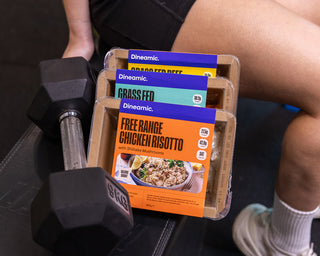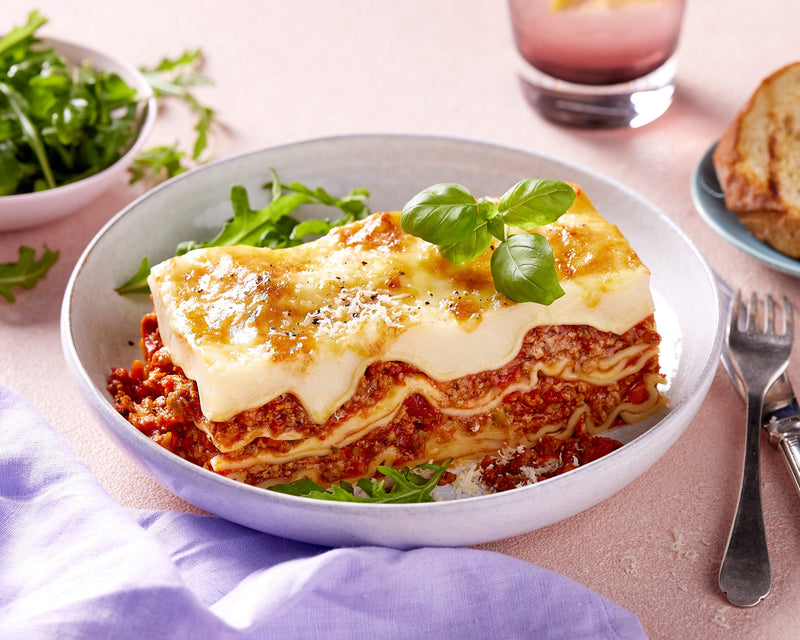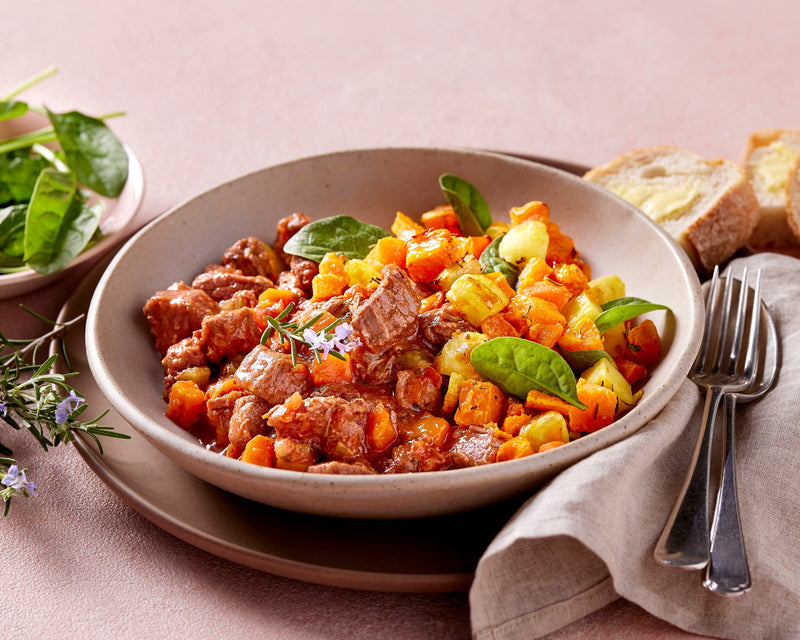
When you read malnutrition, your mind may wander to images from developing countries facing myriad adverse conditions, but Malnutrition is also very apparent in developed countries. In fact, malnutrition is estimated to affect 40% of patients in Australian hospitals and 50% of nursing home residents. Often called the “silent epidemic” it is a major public health issue right here in Australia.
We’ve partnered with Dietitian Connection for Malnutrition Week 2021 because we believe malnutrition is everybody’s business. This year their goal is to raise awareness about Malnutrition, not only amongst healthcare professionals but the general public too.
What is malnutrition?
Malnutrition doesn’t just relate to hunger or starvation; it can be defined as when someone doesn't have enough nutrients to meet their body's needs. (1)
Who do we need to look out for?
With the statistics above in mind, we need to keep a close eye on the elderly. Malnutrition is common in the elderly for several factors, making them very vulnerable.
After all they’re aging, and like adolescents experiencing puberty, their bodies are changing rapidly. As we age, several factors can contribute to malnutrition, such as a loss of the pleasure in eating, with reduced taste and appetite, greater difficulty eating due to loss of teeth and jaw strength, decreased energy levels. These physical changes, in combination with lifestyle changes, likeas the loss of a life partner or change in living situations can result in mealtime being more of a chore rather than the positive experience it once was. This can then lead to missed or skipped meals and an exclusion of food groups like meat, because it's hard to chew, and therefore a decrease in consumption of essential nutrients needed for optimum health.
Other groups of people who can be affected by malnutrition include people with eating disorders, people who suffer from illness or disease, people who follow restrictive diets, people with depression or anxiety, and people who don’t have access to nutritious food based on where they live or financial reasons.
Key factors that can contribute to malnutrition in the elderly:
- Illness and Disease: inflammation and illness can contribute to a decrease in appetite and may change how the body processes nutrients.
- Dementia: Behavioral or memory problems, can result in forgetting to eat.
- Medication: Can affect the way we absorb nutrients and decrease appetite.
- Age related changes: Difficulty chewing and swallowing, change in taste and hunger.
- Depression: Low social exposure, grief, loneliness, lack of mobility or functions may cause depression, which can decrease appetite.
- Restrictive Diets: Being prescribed diets due to illness may lead to exclusion of food groups.
- Reduced Social Contact: Eating alone can cause loss in interest in cooking and eating.
- Poor access to food: Mobility issues may lead to decreased access to food.
- Alcoholism: High alcohol intake can interfere with digestion and absorption of nutrients, and is often associated to poor eating habits.
Why do we need to take Malnutrition seriously?
Malnutrition can increase the risk of mortality and result in a weakened immune system, increasing the risk of infection, muscle weakness, and decreased bone mass, which also increases the risk of falls and fractures and the overall risk of hospitalization. It should be taken very seriously.
How to spot malnutrition:
- Baggy clothes, loose jewellery, and loss of weight
- Pale skin and fragile skin
- Muscle loss and weakness
- Wounds that don’t heal
- Dental issues
- Confusion
- Poor eating habits
How to prevent malnutrition in the elderly:
Watch out for your loved ones and try spot signs early on. Its’s difficult to reverse the effects of malnutrition and weight loss. Education on the importance of eating a variety of foods and helping to find a lifestyle and diet that suits the individual's needs. Ensure they have access to nutritious food in their living situations, check if they have the capabilities to cook, reheat, or store food and if they have a nice area to eat in or somebody to eat with. All of these are variables in creating a positive mealtime experience for your loved ones.
If you feel you’re out of your depth or your loved one or person of concern isn’t listening... reach out to a qualified health professional for guidance. Your doctor, dietitian, or nutritionist will be well equipped and trained to assist you and your loved one on their health journey.
Ways to improve nutrition in the elderly!
Energy in! Maintaining weight through the intake of food and prioritizing what is eaten first before becoming too full. If your loved one is becoming full fast, try and avoid drinking before or with their meal. Encourage them to reach for the energy-dense items, first protein, then a calcium rich food source, next up a nutrient-dense carbohydrate and finally, their veggies!
Protein: include protein in every meal choose proteins that are easy for them to eat: eggs, legumes, beans, or fish, nut butters
Calcium rich food: should also be included with each meal, through dairy products like cheese, yogurt, custards or milk after a meal. Foods that have moderate sources of calcium include eggs, broccoli and other green leafy vegetables and canned fish with edible bones like sardines and canned tuna. – plant milks which you can also buy calcium fortified these days.
Carbohydrates: Nutrient dense carbohydrates, to help increase nutrient consumption, even if it's only a few mouthfuls. Try wholegrain bread, brown rice, oats, banana, sweet potato, and beans, stewed and dried fruit.
Healthy Fats: As we all know fats are energy dense and high in calories, so healthy fats can help increase energy input and can be nutrient dense too. Try avocado, oily fish, eggs, nut butters, and our all-time favourite extra virgin olive oil.
Water: Ensure they’re getting their fluids up, this doesn’t have to just be water try lattes, juice, fortified milk drinks , or soup. Dehydration can lead to low energy levels, moodiness and may have effects on our digestive systems
Ready Meals for the elderly!
The ready meal industry is growing, which is amazing for an array of people but especially the vulnerable who don’t always have access to cooking, fresh produce or a kitchen. Dineamic makes delicious ready meals are nutritionally balanced with lean proteins, calcium rich foods like dairy and broccoli, olive oil, and comple carbohyrates. Making Dineamic a perfect solution at lunch and dinner time for elderly.
We’re proud to work with home care providers who assist with accessibility to the elderly. Ordering can be done online or over by phone with our customer service team.
Fan favourite meals from our existing home care customer includes our Beef Lasagne, Chicken & Mushroom Risotto, Lamb Ragu with Linguine, Beef Bolognese with Broccoli & Pasta, Slow Cooked Mediterranean Beef and not to mention our soup range which is always a hit!
So, with our aging loved ones and those in the community around us, keep malnutrition on the forefront of your mind. Check in with people, take action where needed, and reach out for help from your healthcare professionals. - that’s what they’re there for!
Alicia McIntyre
References:
- Managing undernutrition in the elderly
Prevention is better than cure Volcume, No.9 2012
https://www.racgp.org.au/afp/2012/september/managing-undernutrition-in-the-elderly/
- Nutrition Connection: Malnutrition Resources
https://nutritionconnection.com.au/malnutritionweek/









